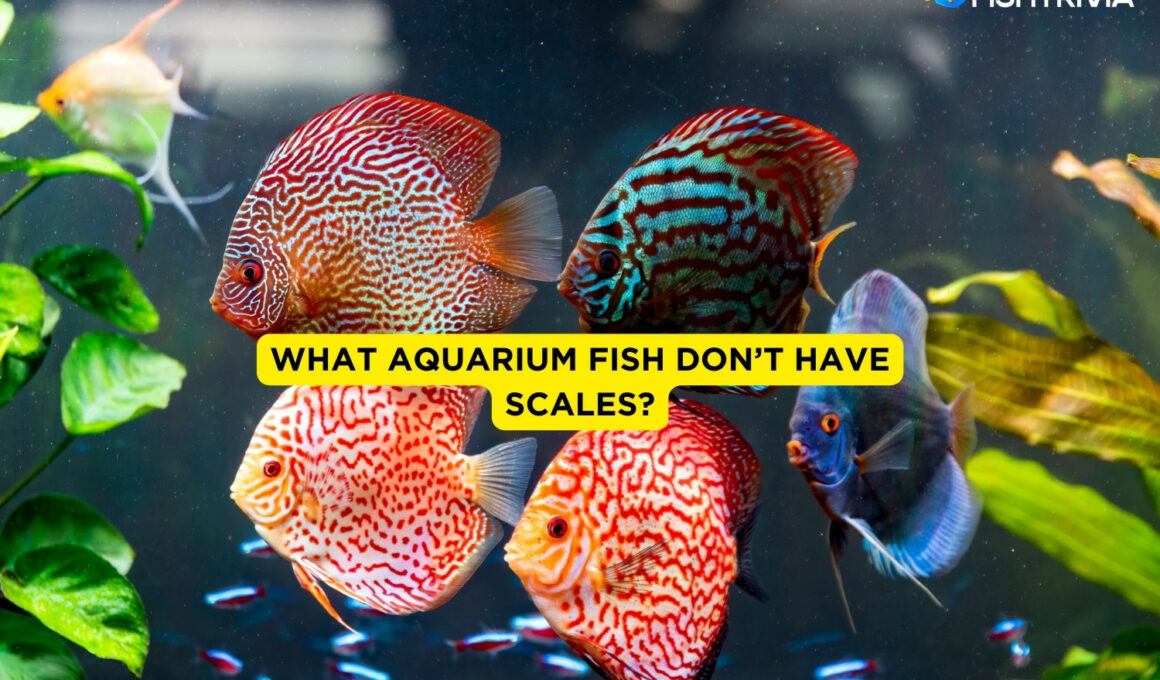In this article Show
As an avid fish keeper and enthusiast, I’ve encountered numerous species in home aquariums, each with its unique charm and characteristics. However, one intriguing category that often piques curiosity is that of fish without scales.
You might wonder why some fish lack scales. Scales, generally, serve as a protective layer, aiding fish in various aspects like locomotion and defense. Yet, nature showcases its versatility with scaleless fish, which have adapted differently to their environments. This adaptation raises questions and interest, especially among those passionate about marine life and home aquariums.
In this comprehensive guide, we’ll introduce you to an array of scaleless fish, spanning from the commonly known Catfish found gliding in freshwater rivers to the mysterious Sharks patrolling the depths of our oceans. Our focus will extend beyond identifying these unique creatures; we’ll discuss their habitats, behaviors, and how they thrive without the conventional armor of scales.
What Fishes Don’t Have Scales?
From the shallows of freshwater streams to the uncharted ocean depths, these fish demonstrate nature’s incredible ability to diversify. Here is the list of fishes without scales you’ll find helpful.
1. Catfish (Family: Siluriformes)
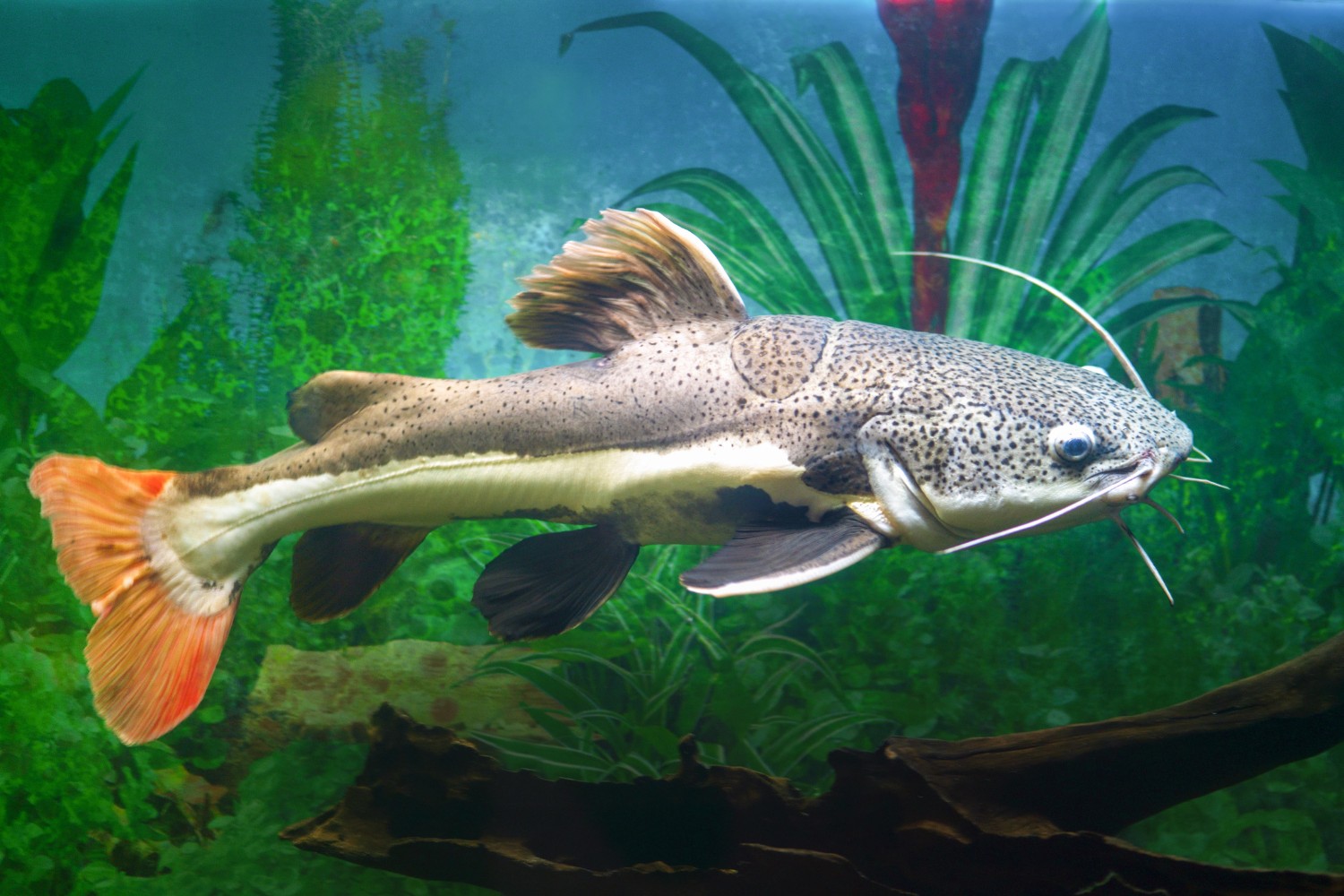
Catfish, devoid of scales, are distinguished by their prominent barbels, which resemble a cat’s whiskers. These fish exhibit a great variety in size and shape, with some species growing to impressive lengths. They are remarkable and one of the most popular fish with no scales.
Habitat
They are ubiquitous in freshwater ecosystems worldwide, including rivers, lakes, and ponds. Catfish are adaptable, thriving in a range of environmental conditions, from clear waters to murky depths.
Unique Features
Catfish possess a highly developed sense of taste and smell, with their barbels playing a crucial role in detecting food in dark or muddy waters. Many species are nocturnal and use their sensory adaptations for night hunting.
2. Knifefish (Family: Gymnotiformes)
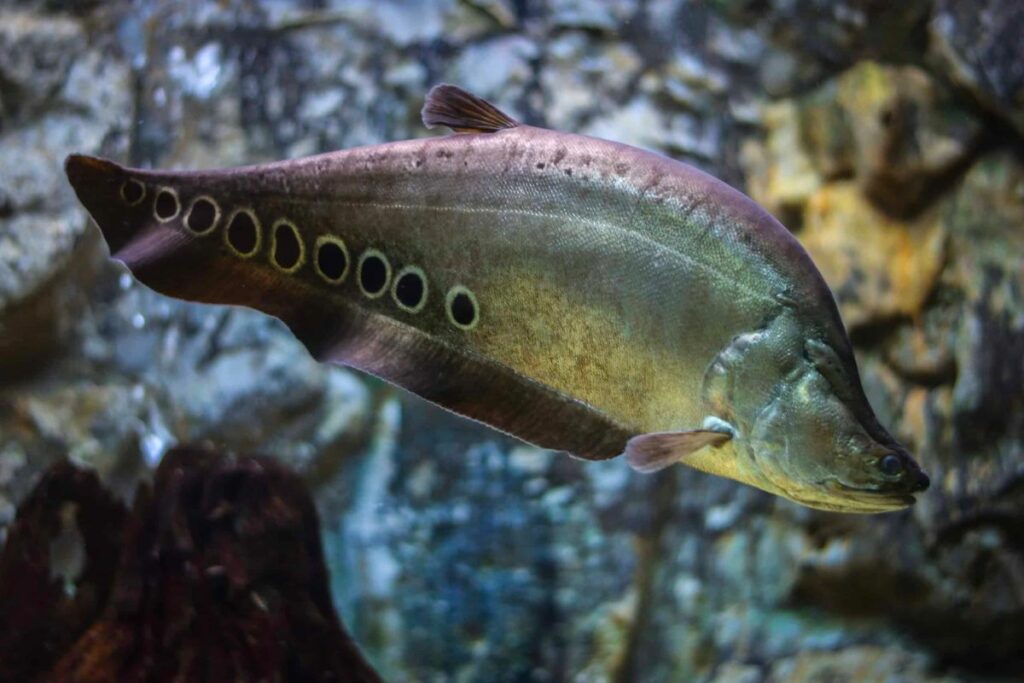
The knifefish, with its sleek, elongated body, resembles a blade, moving through water with graceful, rippling motions. They are primarily nocturnal and known for their smooth, scaleless skin.
Habitat
These fish are native to the fresh waters of the Amazon Basin, thriving in environments ranging from fast-flowing streams to stagnant pools.
Unique Features
Knifefish are famous for their bioelectric capabilities. They can produce electric fields for navigation, communication, and detecting prey in their dark habitat. This ability is especially crucial as many knifefish have poor eyesight.
3. Moray Eels (Family: Muraenidae)
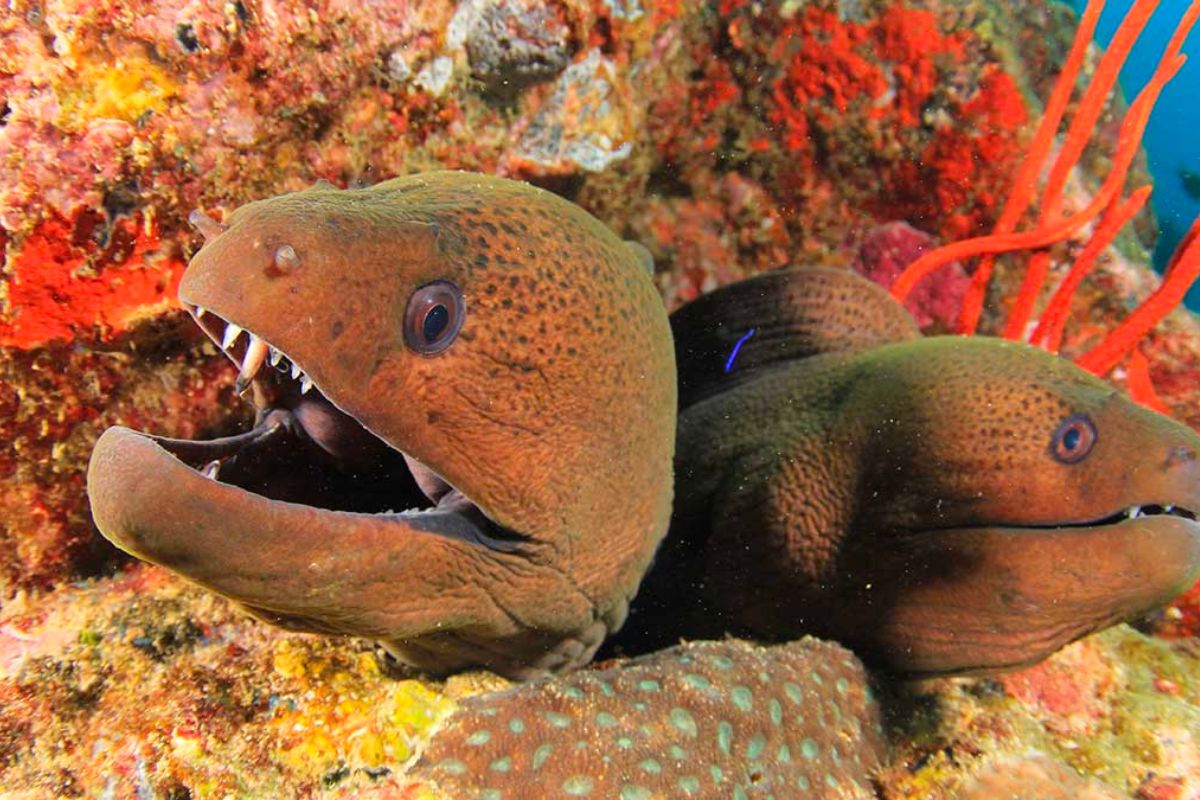
Moray eels are one of the most recognized scaleless fish in saltwater environments. They are known for their elongated, snake-like bodies and distinctive, fearsome jaws.
Habitat
These eels are predominantly found in warm, tropical, and subtropical oceans, often hiding in crevices within coral reefs or rocky substrates.
Unique Features
Moray eels possess a remarkable hunting mechanism. Their pharyngeal, internal second jaws shoot forward to grab and pull prey into their throats. This adaptation allows them to secure slippery prey effectively.
4. Parrotfish (Family: Scaridae)
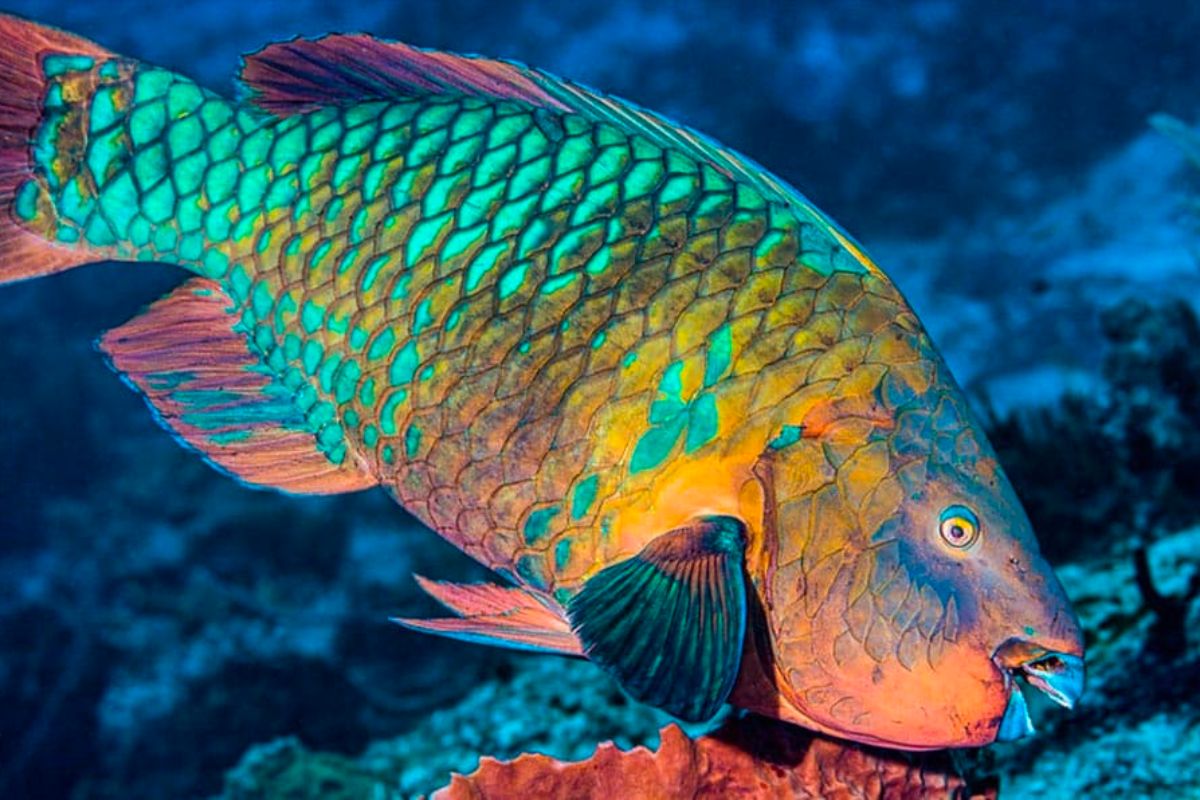
Parrotfish are vibrant and colorful, known for their beak-like dental plates. They exhibit a range of colors and patterns, often changing hues during different life stages or for mating displays.
Habitat
These fish are predominantly found in coral reefs, playing a vital role in these ecosystems.
Unique Features
Parrotfish contribute significantly to coral reef health by feeding on algae that, if left unchecked, can overwhelm coral reefs. Interestingly, their excretions of undigested coral contribute to the creation of sandy beaches.
Deep-Sea Scaleless Fish
5. Anglerfish (Order: Lophiiformes)

Anglerfish are among the most intriguing deep-sea creatures, known for their grotesque appearance and the bioluminescent lure they use to attract prey in the pitch-black depths.
Habitat
They inhabit the ocean’s aphotic zone, where sunlight fails to penetrate.
Unique Features
The luminescent lure, stemming from a modified dorsal fin, entices prey close enough for the anglerfish to devour them. This adaptation is vital in the nutrient-scarce depths of the ocean.
6. Hagfish (Class: Myxini)
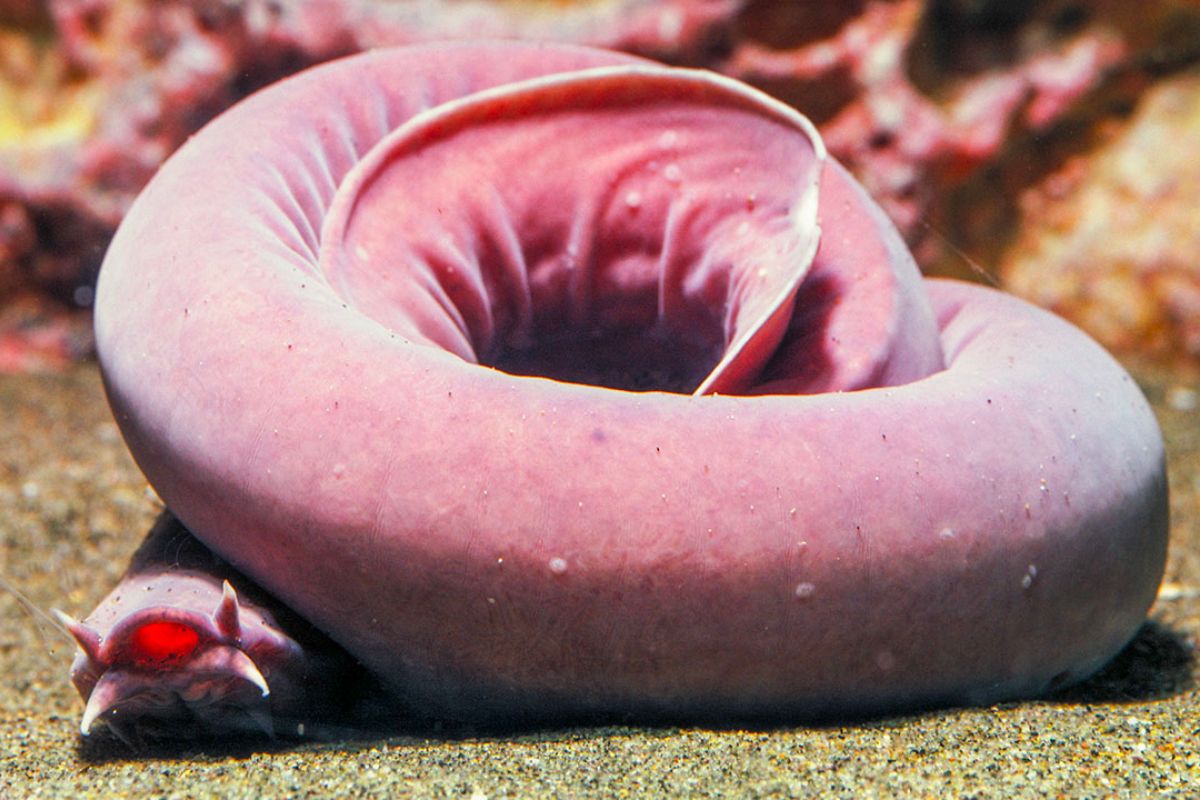
Hagfish, resembling eels, are unique for their scaleless, slimy skin. They are often considered living fossils, providing insight into early vertebrate evolution.
Habitat
Found in cold oceanic waters worldwide, hagfish dwell on sea floors, often burrowing into the substrate.
Unique Features
Their defense mechanism is extraordinary: when threatened, hagfish excrete a slime that expands in water, deterring predators and enabling them to escape.
7. Sharks
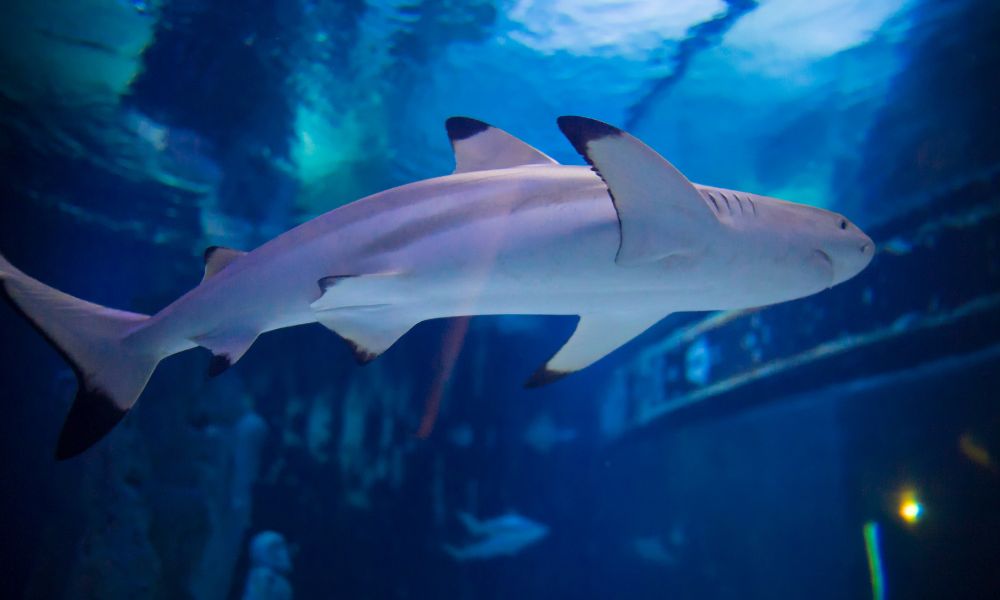
Literally, the most popular fish without scales and often characterized by their fearsome reputation, sharks are an integral part of the marine ecosystem. They are unique among fish for their scaleless skin, covered instead with dermal denticles.
Habitat
They are found in coastal surface waters in all major oceans.
Unique Features
Known for their predatory skills, Great Whites are apex predators with a sophisticated sense of smell and highly tuned predatory instincts.
Frequently Asked Questions
Why Don’t Some Fish Have Scales?
Scalelessness in fish is an evolutionary adaptation. In certain environments, having scales may not be advantageous, or other forms of protection and camouflage may have developed. For instance, the slimy skin of hagfish makes them difficult for predators to grasp.
Can Scaleless Fish Be Kept in Home Aquariums?
Yes, many scaleless fish, like certain catfish and knifefish, can be kept in home aquariums. However, they often require specific care, such as softer substrate to prevent injury and excellent water quality, as they can be more sensitive to environmental changes.
Are Scaleless Fish More Prone to Disease?
Scaleless fish can be more susceptible to parasites and infections due to the lack of a protective scale barrier. This necessitates careful monitoring of water quality and health in aquarium settings.
Do Scaleless Fish Play a Unique Role in Their Ecosystems?
Absolutely. Each species plays a critical role in its ecosystem, like the parrotfish in coral reefs, which help control algae growth, or deep-sea anglerfish that act as apex predators in their habitat.
Are Scaleless Fish Edible?
Many scaleless fish are edible and form an important part of local diets in various cultures. However, it’s essential to be aware of sustainable fishing practices to ensure the longevity of these species.
This comprehensive overview gives us a deeper understanding of the diverse world of scaleless fish. Each species, from freshwater catfish to the enigmatic deep-sea anglerfish, showcases remarkable adaptations that allow them to thrive in their respective habitats.
This diversity not only fascinates fish enthusiasts but also highlights the complexity and adaptability of life in aquatic ecosystems.






